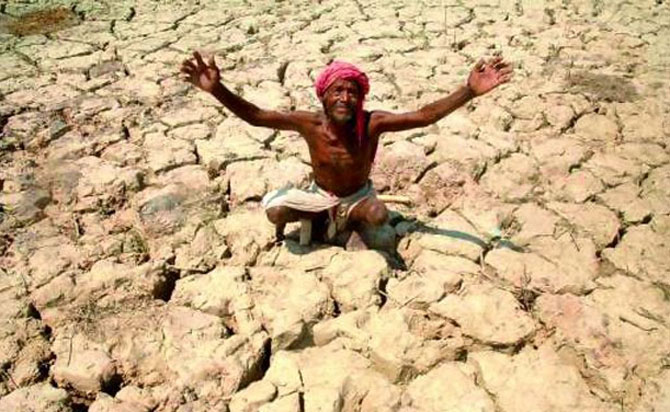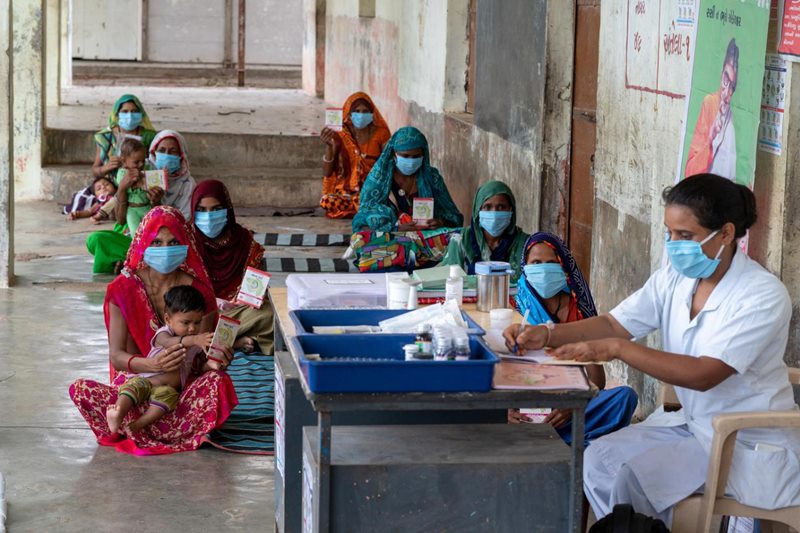India among the top 5 countries with highest exposure of vulnerable population to extreme heat : Lancet Report
The Lancet Countdown report, released today on October 21, has shared some grim details about climate change and public health. According to the study, the elderly in countries like China, India, America, Japan and Indonesia were among the most affected due to heatwave exposure and the exposure is following an increasing trend. More details here.


India among the top 5 countries with highest exposure of vulnerable population to extreme heat
India has witnessed 15 per cent higher extreme heat in 2019 as compared to 1990, according to the latest Lancet report. It shows the key trends are getting worse and exacerbating the already existing health and social inequities. The exposure is witnessing an upward trend and similar to other countries, India is yet to take measures to prevent and mitigate the health effects of climate change.
The Lancet Countdown is an international collaboration of 38 academic researchers that independently monitors the health consequences of a changing climate and its sixth annual edition was launched today. The report tracks 44 indicators on links between health and climate change.
The data from the report highlighted that the rapid increase in heatwaves and wildlife exposure, drought, changes in the suitability for infectious diseases, and rising sea levels, combined with insufficient measures, are harming people’s health in all countries. As per the report, in 2021, the elderly (over 65) were affected by 3.1 billion more days of heatwave exposure as compared to the 1986-2005 baseline average. Senior citizens from China, India, America, Japan, and Indonesia were the most affected.
The Lancet Countdown report also outlined that current COVID-19 recovery plans are not compatible with the Paris Agreement and will therefore have long-term health implications. Scientists have emphasized the importance of maintaining the Paris Agreement’s aim to limit the average global temperature rise to 1.5°C above pre-industrial levels and mobilise finances for effective climate response, especially in developing countries.
Maria Romanello, the lead author of the Lancet Countdown report, expressed her anguish over the status quo being maintained and said, “At best the trends in emissions, renewable energy and tackling pollution have improved only very slightly. This year we saw people suffering intense heat waves, deadly floods, and wildfires. These are grim warnings that for every day that we delay our response to climate change, the situation gets more critical.”

Key Findings of the Lancet Report
The report has highlighted that climate change is driving an increase in the frequency, intensity, and duration of drought events, threatening water security, sanitation, and food productivity, and increasing the risk of wildfires and exposure to pollutants.
The five years with the most areas affected by the extreme drought have all occurred since 2015. It stated that in 2020, up to 19 per cent of the global land surface was affected by extreme drought in any given month. Between 1950 and 1999, this value was as low as 13 per cent.
Over a fifth of India’s land area, 21.06 per cent, is facing drought-like conditions, according to recent data released by Drought Early Warning System (DEWS), a real-time drought monitoring platform.
The report also stated that climate change threatens to accelerate food insecurity that affected two billion people in 2019. Rising temperature shortens the time in which plants reach maturity that results in smaller yields, and an increased strain on our food systems. Maize has seen a six per cent decrease in crop yield potential, wheat a three percent decrease and rice a 1.8 per cent decrease, compared to 1981 – 2010 levels.
Emphasising on inequalities in the global response to climate change, the report indicated that the countries lowest on the human development index are often least responsible for rising greenhouse gas emissions and are lagging behind in climate change adaptation, mitigation efforts, and in realising the associated health benefits of accelerated decarbonisation.
Focusing on how marine life is affected due to climate change, the report stated that average sea surface temperature has increased in the territorial waters of nearly 70 per cent of coastal countries analysed, compared to 2003-2005. This also reflects an increasing threat to their marine food security.

In 2021, the World Health Organization found just over half of countries (49 per cent) that answered the Health and Climate Change Global Survey (45 out of 91) had a national health and climate strategy in place.
Nearly three-quarters of countries surveyed said finances prevented them from developing such a strategy while others cited a lack of skilled people being restricted by COVID and lacking research and evidence. On a global level, climate change adaptation funding directed at the health system represents just 0.3 per cent of total climate change adaptation funding.
The report also suggested that the potential for outbreaks of dengue, chikungunya, and Zika is increasing most rapidly in countries with a very high human development index, including European countries. Suitability for malaria infections is also increasing in cooler highland areas of countries with a low human development index

